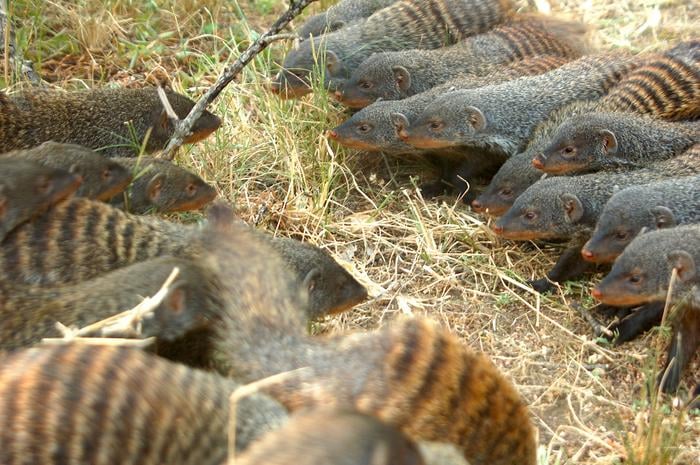Research project led by Professor Michael Cant from the University of Exeter aims to shed light on the intriguing phenomenon of intergroup conflict in animals. The study, supported by a €3 million Advanced Grant from the European Research Council (ERC), will focus on two warlike species – mongooses and termites – to understand how evolution can lead to extreme aggression between groups and the factors that can promote peace.
The Evolution of Cooperative Groups
One of the fundamental questions in evolutionary biology is how cooperative groups evolve through natural selection. Previous research has shown that factors within a group, such as kinship and reciprocity, can foster altruism. However, recent evidence from humans and other social animals suggests that conflict between groups, or warfare, can also have a profound influence on social behavior.
Professor Cant explains, “Intergroup conflict could in principle act as a fundamental moulding force in the evolution of animal societies, shaping not just behaviour but also life history and social organisation, but this idea has not been tested.”
Testing the Hypothesis
To test this hypothesis, the research team will conduct an integrated study combining theory, field work, and laboratory experiments. They will focus on two model systems: a wild population of banded mongooses in Uganda and a lab population of dampwood termites in Cornwall.
“We will test this hypothesis through an integrated theory, field and lab study using two animal societies as model systems,” says Professor Cant. “The outcome will be a significant advance in our understanding of how social life forms and societies evolve.”
Implications for Human Evolution
The results of this study will not only help to explain why violence between rival groups evolves in some species but not others, or between some groups and not others, but it will also have implications for our understanding of human evolution.
By unraveling the mysteries of warfare in the animal kingdom, researchers hope to gain insights into the factors that contribute to the development of extreme aggression between groups and the conditions that can promote peaceful coexistence.
A Collaborative Effort
The research team, led by Professor Cant, includes experts from the universities of Cambridge, York, Swansea, and Bielefeld in Germany, as well as a field team based in Uganda. This collaborative effort brings together a diverse range of expertise to tackle this complex and fascinating topic.
Supporting the Next Generation of Researchers
The ERC grant not only supports leading researchers in pushing the boundaries of knowledge but also creates approximately 2,500 jobs for postdoctoral fellows, PhD students, and other research staff across Europe.
Iliana Ivanova, Commissioner for Innovation, Research, Culture, Education and Youth, emphasizes the importance of this investment in nurturing the next generation of brilliant minds. “This investment nurtures the next generation of brilliant minds. I look forward to seeing the resulting breakthroughs and fresh advancements in the years ahead,” she says.
The “Intergroup conflict and the evolution of animal societies” project, led by Professor Michael Cant and supported by the ERC, promises to provide groundbreaking insights into the evolution of extreme aggression between groups in the animal kingdom. By focusing on warlike species such as mongooses and termites, researchers hope to uncover the factors that contribute to the development of intergroup conflict and the conditions that can promote peace. The results of this study will not only advance our understanding of animal societies but also shed light on the evolution of human behavior and social organization.


